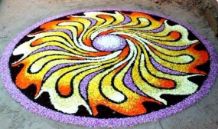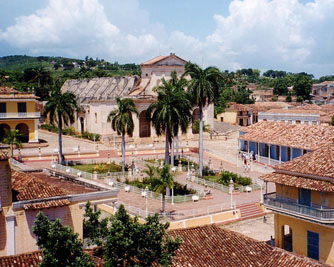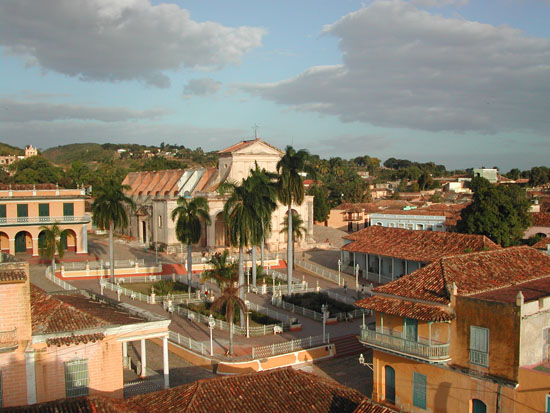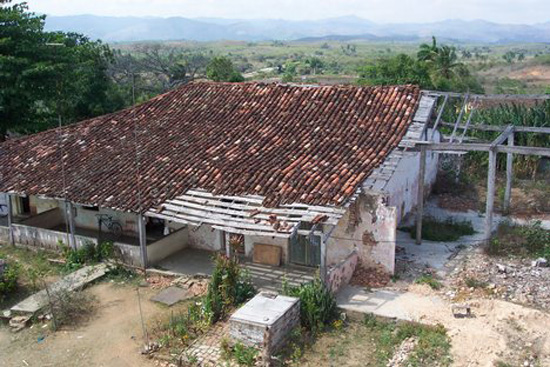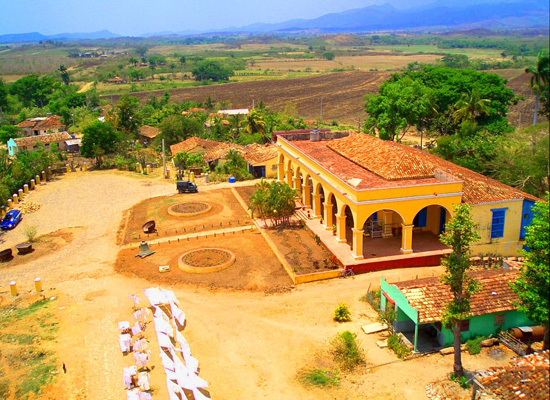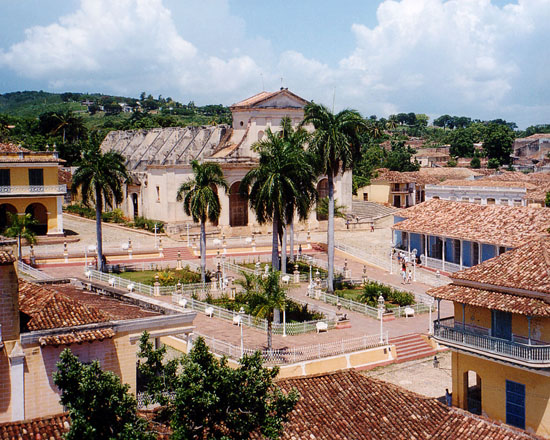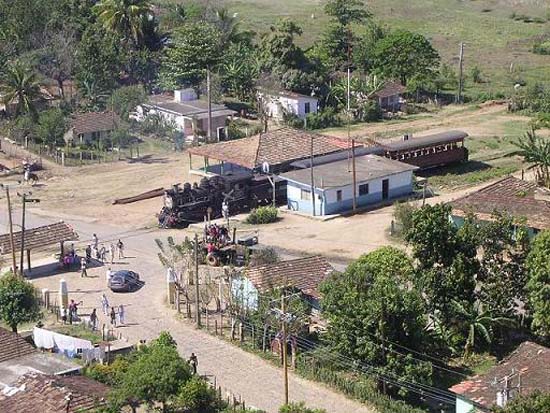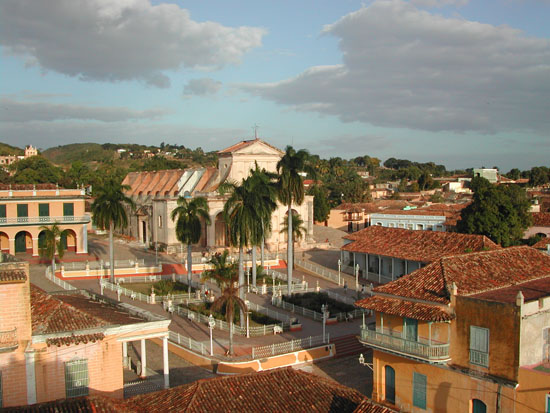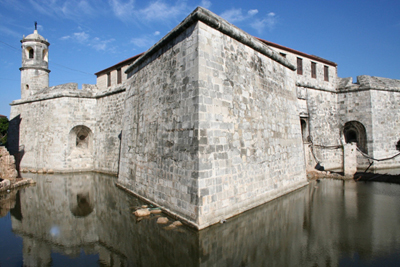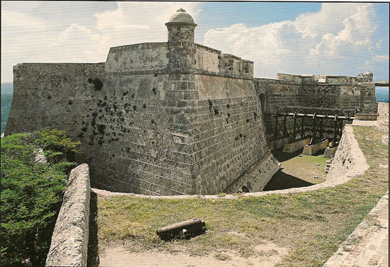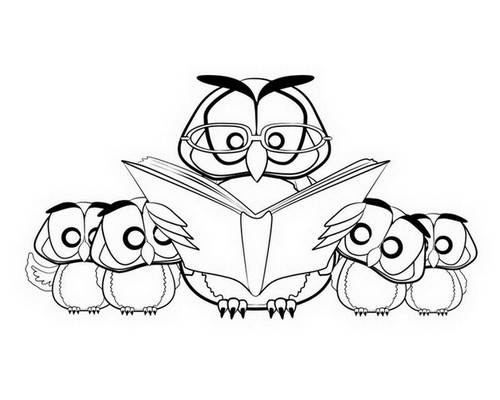Trinidad is a town in Central Cuba. It was founded on 23 December, 1514 by Diego Velázquez de Cuéllar in honor of the Holy Trinity, and was known as Villa de la Santísima Trinidad. It is one of the best preserved cities in the Caribbean, from the time when the sugar trade was the main industry in the region. Valley of the Ingenios or Valley of the Sugar Mills is literally a natural history museum for its conservation of the ruins of 12 sugar-mills, knowing that at the peak of the industry in Cuba there were over fifty cane sugar mills. The Valley is a series of three interconnected valleys, about 12 kilometers outside Trinidad. The plantation’s large belfries, there are remnants of sugar mills, 19th-century manor houses, milling machinery, huts, instruments for work and slave torture remain(with over 30,000 slaves working in the mills ), aged trees and winding paths. The entire area covers 270 sq km (104 sq mi) and includes the sites of over 70 former sugar mills.
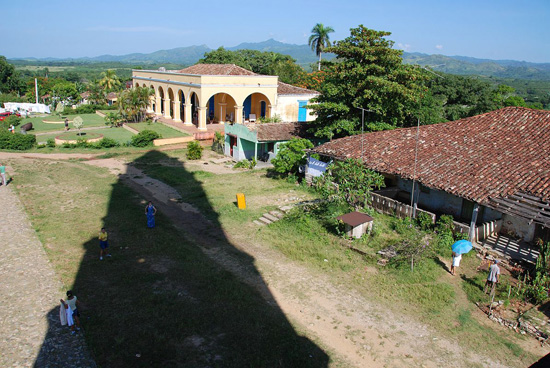
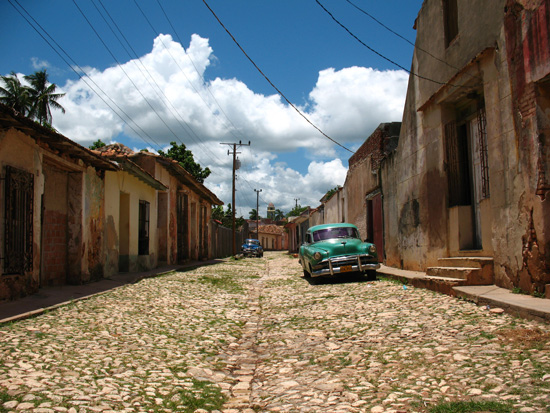
The three valleys are San Luis, Santa Rosa and Meyer. They are the centre of sugar production in the late 18th to the late 19th century, since Sugar production was an important industry for Cuba from the earliest settlement by the Spanish, these centres introduced sugar cane to the island in 1512,
In the San Luis Valley, renamed the Valley of Sugar-Mills, there are still vestiges of aboriginal culture, colonial architecture and the 19th century War of Independence, which marked the decay of this sugar emporium.
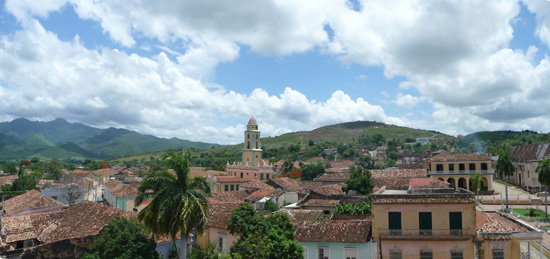
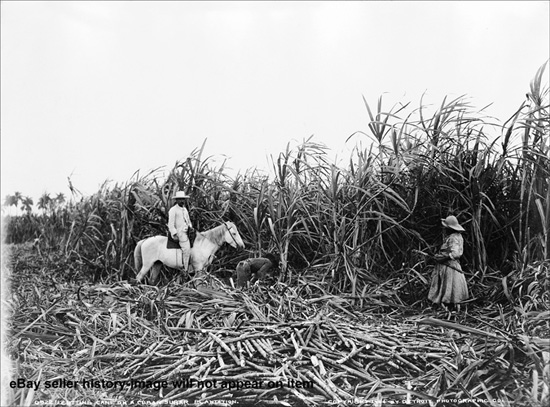
The island became the world’s foremost producer of sugar during the late 18th and 19th centuries, when sugar production was the main industry. By mid-19th century, greatly favored cities such as Trinidad were exporting up to one million arrobas (bundles of around 12 kilos). UNESCO has declared it a Cultural Patrimony of Mankind.
The best places conserved in the valley are the main house of the sugar magnate Manacas Iznaga, a tower and some barracones, the original slave quarters, still stand. Although the barracones are now used as housing and are in poor repair.
The Manaca Iznaga house the owner’s house (which has been converted into a restaurant) is in the old plantation house, a yellow colonial building, and the “Iznaga Tower” are well maintained .
The Iznaga Tower was built between 1835 and 1845 by the owner, Alejo Maria Iznaga y Borrell. It is 43.5 m high, has seven floors and 136 steps to the.According to experts, There were two bells in the tower, the bell that formerly hung on top of the tower , was rung when it was time for the slaves to stop work and take a meal in a communal eating house, , as well as the times for prayers to the Holy Virgin in the morning, midday and afternoon. the other was rung to sound an alarm if an escape was discovered, alerting the slave catchers, or rancheros. One of the bells, dating from 1846, can be seen on the path leading to the tower. At one time it was the tallest structure in Cuba. A recognised landmark of the region, the Iznaga Tower testifies to the area’s flourishing material culture in the Spanish colonial period. The large bell now rests at the foot of the tower.
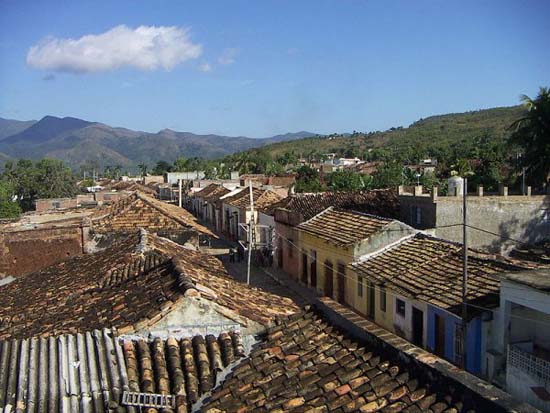
The Valle de los Ingenios constitutes a monument for remembering the mournful history of slavery, because in that place worked around 30,000 blacks brought from Africa as slaves. Due to the virtual extinction of the native Cubans through contact with diseases brought by the European settlers and attrition though their poor treatment as slaves, it was necessary for the Spanish plantation owners to import slaves from Africa to work in the sugar cane fields and in the mills. This is part of why the area was declared a World Heritage Site by UNESCO in 1988, together with the city of Trinidad.
Trinidad and the Valley de los Ingenios were inscribe as a UNESCO World Heritage Site during the 12th session of the World Heritage Committee meeting in Brasilia, Brazil, on 5-9 December, 1988, because of its historical importance Although most of the sugar mills are in ruins.
Hotels in the region:
Check availability, maps, photos and reviews before traveling, and book at the guaranteed lowest price.











